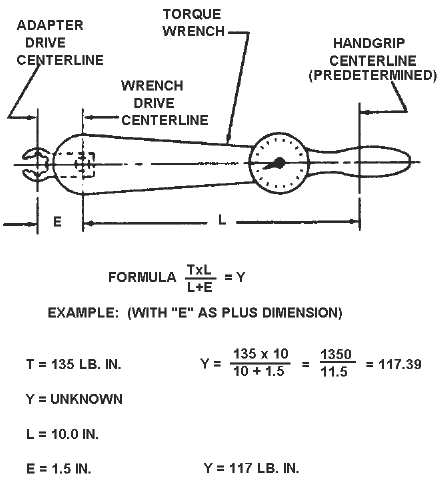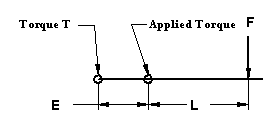- Good Sam Community
- Everything RV
- RV Tips & Tricks
- Re: Ball Loosened, Use Loctite?
- Subscribe to RSS Feed
- Mark Topic as New
- Mark Topic as Read
- Float this Topic for Current User
- Bookmark
- Subscribe
- Mute
- Printer Friendly Page
Ball Loosened, Use Loctite?
- Mark as New
- Bookmark
- Subscribe
- Mute
- Subscribe to RSS Feed
- Permalink
- Report Inappropriate Content
Oct-22-2017 08:28 AM
his 1946 Chevrolet 2 ton rack truck. He uses it
for his food catering business.
Being it is old it breaks down once a year. So
when booked to do a party he has to get his truck
there so it is towed with a Chevy Suburban.
Well the truck just had to have the head R&R so the
truck had to be towed a few times. This time I bought
a new draw bar and 2" ball to get the tow bar level
when towing his old truck.
The problem is that the ball came loose after a few
tows. Last year we had to tow his truck for many weeks
because his engine was at the machine shop getting
rebuilt and we never had any problems using another
draw bar and ball.
I did not have a 1.5 wrench so I went to my neighbors
house, retired mechanic. He tightened down the nut
with a long combination wrench. Then doubled up the
wrench and gave it another tug.
Any ideas why it loosened?
He used anti seize grease when tightening the ball
to the draw bar. He said incase you ever have to take
it apart. I never did that before.
Could that of caused the ball to loosen?
Is it a good idea to clean off all the threads and
apply Loctite?
Thanks for your help.
Here is a link to my son's website so you can see his
truck:
http://www.pizzarita.org/
- Mark as New
- Bookmark
- Subscribe
- Mute
- Subscribe to RSS Feed
- Permalink
- Report Inappropriate Content
Nov-02-2017 12:33 AM
Use Loctite only if OEM recommended, with the expectation that you will never want to take it apart. Blue Loctite is more easily overcome, but it will take more torque to get it apart than it took to put it together. Consider red Loctite to be almost as permanent as a weld.
Itasca Spirit 29B
- Mark as New
- Bookmark
- Subscribe
- Mute
- Subscribe to RSS Feed
- Permalink
- Report Inappropriate Content
Oct-27-2017 08:35 AM
mkirsch wrote:Yes if the OP follows this.... no loctite needed.
The past few I've installed, I've used the "XXX-pound guy standing on Y-inch long wrench" method and not one of them has come loose either.
Easy simple
- Mark as New
- Bookmark
- Subscribe
- Mute
- Subscribe to RSS Feed
- Permalink
- Report Inappropriate Content
Oct-27-2017 08:29 AM
The past few I've installed, I've used the "XXX-pound guy standing on Y-inch long wrench" method and not one of them has come loose either.
Putting 10-ply tires on half ton trucks since aught-four.
- Mark as New
- Bookmark
- Subscribe
- Mute
- Subscribe to RSS Feed
- Permalink
- Report Inappropriate Content
Oct-26-2017 01:46 PM
mkirsch wrote:
Are people so intent on proving themselves right that they will bicker over 6 pages of thread over <1% difference?
We're tightening a hitch ball here fellas, not machining parts for the space shuttle.
If the spec is 250 ft-lbs, it's not going to snap off at 251 ft-lbs, and it's not going to fall apart at 249 ft-lbs. Heck it's not going to snap off at 260 ft-lbs or fall apart at 240 ft-lbs. Everything has tolerances, except maybe space shuttle parts.
A 200lb guy putting all his weight on a 15" lever arm will exert 250 ft-lbs of torque. Stand on it until it stops turning, and maybe give it a little bounce-bounce for good measure. It's tight enough, and if you take it to the professional and have them put their torque wrench on it, I bet it will be within 5%
To be fair, the thread got a bit off topic so we weren't "bickering" about a ball hitch. We weren't even bickering as much as discussing. I, for one, welcome discussion as I wouldn't have given the proper thought as to what does or doesn't affect a torque wrench were it not for this thread.
The reality is most people don't have access to a 200+ ft-lb torque wrench so the accuracy is probably a moot point. The past few I've installed either had the included plastic crush washer, were assembled on a drawbar already or were just bolting onto my quad where the torque wasn't important.
- Mark as New
- Bookmark
- Subscribe
- Mute
- Subscribe to RSS Feed
- Permalink
- Report Inappropriate Content
Oct-26-2017 11:27 AM
We're tightening a hitch ball here fellas, not machining parts for the space shuttle.
If the spec is 250 ft-lbs, it's not going to snap off at 251 ft-lbs, and it's not going to fall apart at 249 ft-lbs. Heck it's not going to snap off at 260 ft-lbs or fall apart at 240 ft-lbs. Everything has tolerances, except maybe space shuttle parts.
A 200lb guy putting all his weight on a 15" lever arm will exert 250 ft-lbs of torque. Stand on it until it stops turning, and maybe give it a little bounce-bounce for good measure. It's tight enough, and if you take it to the professional and have them put their torque wrench on it, I bet it will be within 5%
Putting 10-ply tires on half ton trucks since aught-four.
- Mark as New
- Bookmark
- Subscribe
- Mute
- Subscribe to RSS Feed
- Permalink
- Report Inappropriate Content
Oct-25-2017 08:42 PM
wnjj wrote:Yep. And one of the easiest ways to understand why is to consider what happens with a torque screwdriver, where you twist directly over where the torque is measured. Put a crowfoot type extension on a screwdriver, and you'll never apply any torque to the fastener because you only end up trying to push it sideways, not rotate it. (You can apply torque to the fastener by pushing the screwdriver sideways, but that isn't measured as torque and if you do that, you can also torque the fastener while applying no torque to the screwdriver). Similar thing with wrenches, although less intuitive - the effective torque depends on how far from the measurement force is applied.
Yes, it does matter.
- Mark as New
- Bookmark
- Subscribe
- Mute
- Subscribe to RSS Feed
- Permalink
- Report Inappropriate Content
Oct-25-2017 06:18 PM
babock wrote:
Like I said, the length of the torque wrench doesn't matter.
BTW....that drawing has been discussed many times on many mechanical engineering pages and it is incorrect. The length C does not matter. It could be 100 feet long and it wouldn't matter. The torque indicated at T1 is independent of length C. If you are going to cut and paste stuff off the internet, make sure it's correct.
BTW..that isn't a crows foot.
Yes, it does matter.
Think of it this way: Use a breaker bar instead. Right where you pull on the handle, there is force (from your hand) but 0 torque within the bar as there is no distance to apply that force. At the other end is the maximum torque. Everywhere in between along the shaft of the breaker bar is a linear progression of torque from 0 to max.
Now replace that breaker bar with a torque wrench. Everything is still the same and the wrench measure the torque at the bolt (i.e. the max).
Adding a crow's foot means the max torque is still at the bolt but the torque "seen" by the wrench is something less than that. The amount is proportional to the distance between 0 (where your hand is) and max (where the bolt is). The handle distance matters when using the crow's foot.
Adding a handle extension (i.e. cheater bar) when using the crow's foot changes where your hand is applied and therefore also affects the proportion of torque seen by the wrench.
With no crow's foot involved, a handle extension only changes the force needed since the wrench still measures at the bolt where it's needed.
- Mark as New
- Bookmark
- Subscribe
- Mute
- Subscribe to RSS Feed
- Permalink
- Report Inappropriate Content
Oct-25-2017 04:22 PM
Durb wrote:
To all the naysayers maybe an experiment is in order. Put your stinger in your receiver and torque the nut down to say 200 ft-lbs while pushing down on the wrench. Then jack up the receiver so that it is solid to the ground. Don't readjust the wrench and re-torque. The nut will move slightly further tightening the fastener.
Try this do not jack up the receiver but leave it as it was and re-torque the nut. Most likely you will get the same result with the nut will move slightly. That is why I always re-torque lug nuts twice.
- Mark as New
- Bookmark
- Subscribe
- Mute
- Subscribe to RSS Feed
- Permalink
- Report Inappropriate Content
Oct-25-2017 01:50 PM
as already mentioned......the farmer method.
2014 Ram 1500 Laramie Longhorn 2wd 395hp
2017 Forest River Surveyor 243 RBS
2001 Super Sherpa & 2012 DL650A go along also
- Mark as New
- Bookmark
- Subscribe
- Mute
- Subscribe to RSS Feed
- Permalink
- Report Inappropriate Content
Oct-25-2017 10:36 AM
- Mark as New
- Bookmark
- Subscribe
- Mute
- Subscribe to RSS Feed
- Permalink
- Report Inappropriate Content
Oct-24-2017 03:23 PM
Barney
Hensley "Arrow" 1400# hitch (Sold)
Not towing now.
Former tow vehicles were 2016 Ram 2500 CTD, 2002 Ford F250, 7.3 PSD, 1997 Ram 2500 5.9 gas engine
- Mark as New
- Bookmark
- Subscribe
- Mute
- Subscribe to RSS Feed
- Permalink
- Report Inappropriate Content
Oct-24-2017 02:38 PM
32vld wrote:
Draw bar used last year was rated 6,000 lb.
Ball rated 7,500 lb with a 1" dia threaded shaft.
Never came loose.
New draw bar rated 7,500 lb.
Ball rated 12,000 lb, 1" threaded shaft.
Difference is that never seize grease was used,
which I never did in the past.
That I was not the one pulling on the wrench, my
neighbor did. Though it appeared that he pulled
hard.
Truck weighs less then draw bar weight rating.
Is the hole in the new draw bar bigger than the hole in the old one?
2011 Ram 1500 Quad Cab, 4x4, 3.55, HEMI
2009 TL-32BHS Trail-Lite by R-Vision
- Mark as New
- Bookmark
- Subscribe
- Mute
- Subscribe to RSS Feed
- Permalink
- Report Inappropriate Content
Oct-24-2017 11:07 AM
babock wrote:Those must have been your comments which were incorrect.
Like I said, the length of the torque wrench doesn't matter.
BTW....that drawing has been discussed many times on many mechanical engineering pages and it is incorrect. The length C does not matter.




- Mark as New
- Bookmark
- Subscribe
- Mute
- Subscribe to RSS Feed
- Permalink
- Report Inappropriate Content
Oct-24-2017 10:35 AM
BTW....that drawing has been discussed many times on many mechanical engineering pages and it is incorrect. The length C does not matter. It could be 100 feet long and it wouldn't matter. The torque indicated at T1 is independent of length C. If you are going to cut and paste stuff off the internet, make sure it's correct.
BTW..that isn't a crows foot.





